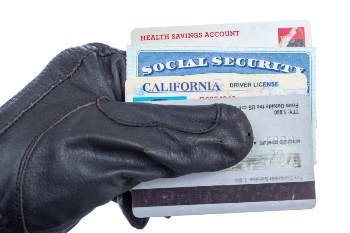4 types of insurance fraud to look out for in 2014
Carolyn Crist
 In the U.S., more than 7,000 insurance companies rake in more than $1 trillion in premiums each year. Within such a massive industry, criminals file fake claims and find loopholes to collect cash. And insurance fraud affects honest consumers – as insurance fraud escalates each year, it drives up rates for everyone.
In the U.S., more than 7,000 insurance companies rake in more than $1 trillion in premiums each year. Within such a massive industry, criminals file fake claims and find loopholes to collect cash. And insurance fraud affects honest consumers – as insurance fraud escalates each year, it drives up rates for everyone.
The FBI estimates the total cost of insurance fraud, not including health insurance, is more than $40 billion each year, which may lead to about $400 to $700 per year in increased premiums for the average U.S. family.
Consumers should look out for five types of insurance fraud — home, auto, property, medical and small business — and take steps to stay protected.
4 types of insurance fraud to watch out for in 2014
1. Fraudulent contractors.
Homeowners should be wary when contractors knock on doors after severe weather strikes, says Frank Scafidi, spokesman for the National Insurance Crime Bureau. Traveling contractors who request money upfront could be planning to scam you. According to the Better Business Bureau, fraudulent contractors were in the top 10 consumer cons for 2013.
The fraudulent contractors will urge you to get busy making repairs before supplies disappear and will say your insurance covers the repairs, Scafidi says.
These con artists are also known as “storm chasers” and they may show up after severe hail storms, hurricanes or tornadoes.
And storm chasers can be very creative when they try to con you. “Watch out if (the contractors) say they want to inspect your roof,” Scafidi says. “They may gouge the tiles to make it look like real hail damage or use shoddy materials to do repairs.”
2. Fake car crashes.
In urban areas, fake car crashes and auto-injury claims add up to more than $5 billion per year nationwide, says Jim Quiggle, director of communications for the Washington, D.C.-based Coalition Against Insurance Fraud.
Here’s how it works: You’re driving at a relatively low speed when the car in front of you stops suddenly and you rear end it. The car is packed with passengers who are coached how to lie about painful back and neck injuries in order to pull in thousands of claim dollars in chiropractic tests and treatment.
Many times, the cases are part of a “crash ring,” which involves fake witnesses, doctors and lawyers. Doctors bill insurance companies using counterfeit medical records, and lawyers threaten to sue the insurance companies unless they pay the bills.
“It puts the insurance companies between a rock and a hard place to challenge these dishonest bills or face the possibility of an expensive civil suit in front of a potentially sympathetic jury,” Quiggle says.
3. Health insurance and medical fraud.
Medical fraud and fake health insurance claims are some of the most lucrative fraud schemes, particularly the “slip-and-fall” routine. This is when a consumer falsely claims that he or she fell inside a business and should receive reimbursement for medical bills, Scafidi says. They may even sue for emotional distress and lost earnings.
Fortunately, many stores have good surveillance cameras, and the video often shows the person looking around and pretending to fall, which reveals the scam, he says.
Medical fraud is so lucrative — about $70 billion annually — that the National Insurance Crime Bureau began establishing medical fraud task forces in 2002. Eight task forces now exist in the U.S. Medical fraud is particularly common in Florida, New York and Michigan and is extending into states such as Minnesota and Kentucky.
With the implementation of the Affordable Care Act, con artists are playing on the misinformation about health insurance requirements, Quiggle says.
“Crooks are cold-calling people and saying the new law requires them to sign up for a new and nonexistent national Obamacare card,” he says. “Then they ask the consumer for a Social Security number, bank number and credit card number to get registered — all the tools needed to steal your identity and ruin you financially.”
4. Business insurance fraud.
Experts are seeing a trend of small businesses carrying out workers’ compensation fraud, where they try to avoid paying full state-required workers’ compensation premiums for their employees. Workers’ compensation fraud is especially prevalent in high-risk professions, such as contracting and construction.
Sometimes the businesses claim fewer workers or classify workers under a different job title. High-risk jobs such as roofers, for example, are sometimes classified as desk clerks for the lower premiums, Quiggle says.
In New York City alone, about 50,000 construction workers are paid off the books or misclassified as independent contractors, according to the Coalition Against Insurance Fraud. Nationwide, workers’ compensation fraud adds up to $500 million each year, the Coalition reports.
The number of employers involved in workers’ compensation fraud is difficult to track because states generally audit less than 2 percent of employers a year, according to the U.S. Government Accountability Office.
What to do if you suspect fraud
If you suspect you’re being set up, capture details of the scene and inform the authorities.
- If you’ve been in a car accident and witnesses show up suddenly, use your phone’s camera to snap photos of the people, car damage and license plates, Scafidi says. “First and foremost, inform your insurance company about what didn’t look right and follow their advice,” he says. “It may help them put a picture together for other activity they’re seeing in the region.”
- Call the National Insurance Crime Bureau hotline at 800-835-6422.
- Contact your state insurance regulator to report suspicions.
See how much you could save today on your car insurance. Get your free auto insurance quotes today!
